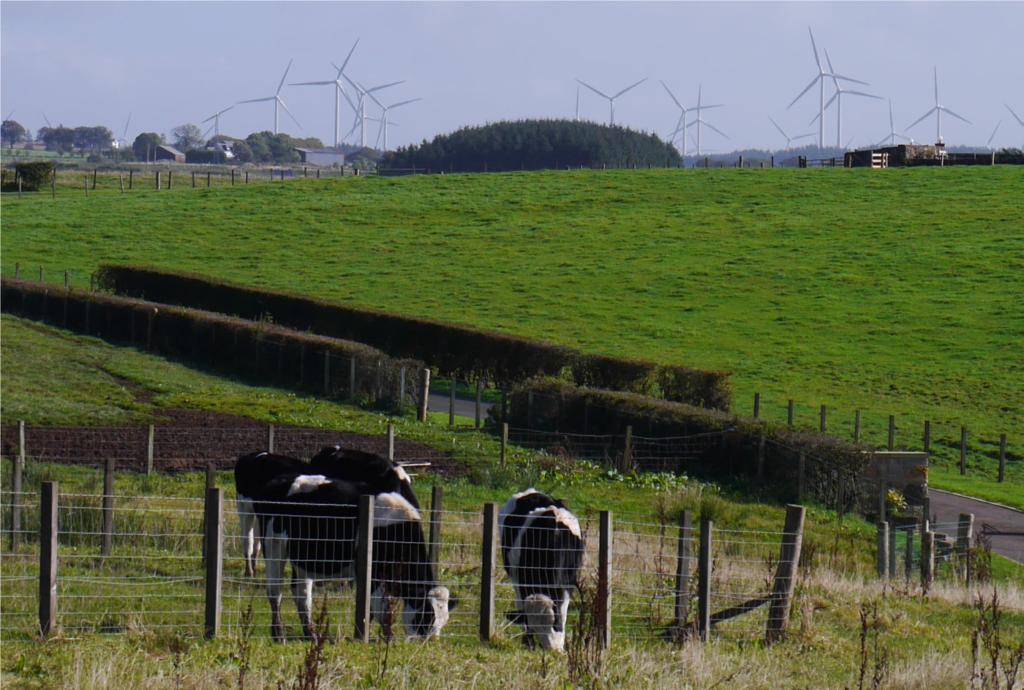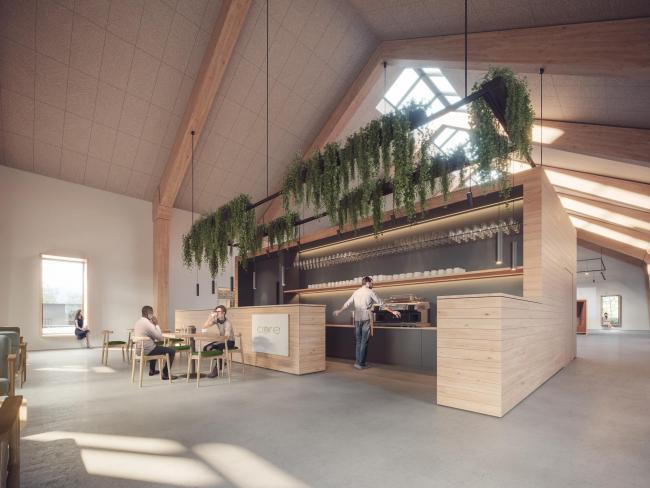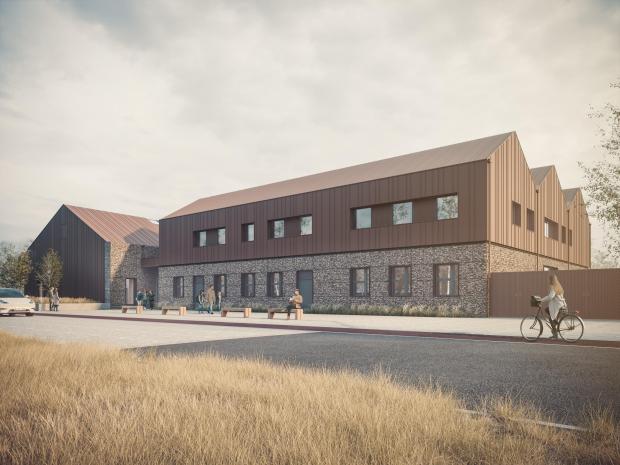
Giving power to the people is elemental in East Ayrshire
THERE’S a lot of wind in East Ayrshire. So much of it, in fact, that the local wind turbines sometimes have to be switched off as there currently isn’t anywhere for all that excess energy to go.
It also often rains quite heavily in the area. However, this blustery and wet weather isn’t a problem as much as an opportunity. It has helped to forge new thinking and to drive a groundbreaking new project that is set to create an ambitious and thriving local low carbon economy.
The aim is to regenerate the area and give it a green future after the demise of deep coal mining in the area in the 1980s and the last opencast coal surface mine in Scotland ending production during July 2020.
A bold new scheme will quite literally involve making East Ayrshire a powerhouse of innovation.
The Community Renewable Energy project, known as CoRE, is to be based in Cumnock and will build on the area’s natural resources in order to provide a self-sustaining network of low cost energy from renewable sources such as wind, solar, geothermal and hydro.
The aim of the initiative is to stimulate community wealth building and to help reach ambitious national and global targets in order to make all local communities, buildings, transport and waste management carbon neutral by 2045.
The CoRE project is being funded with £17 million from the UK Government and £7.5 million from East Ayrshire Council as part of the £251 million Ayrshire Growth Deal, a 10 year investment programme jointly funded by the UK and Scottish governments and local authorities.
“What we are trying to do with CoRE is to create a community which is sustained in terms of its electrical power and energy requirements by using the opportunities we have locally”, explains Karl Doroszenko, East Ayrshire Council’s Development Planning and Regeneration Manager.


“We want to create a locally distributed grid. There are a whole range of generation opportunities here. We have plenty of wind for turbines as well as water for hydro. In addition, we also have water from mines beneath the earth’s surface. These are all things we can tap into.”
The CoRE project goes beyond energy generation. SP Energy Networks and The University of Strathclyde, will play a major role in the delivery of the project and the subsequent innovation programme. Strathclyde is host to one of the most successful energy research hubs in Europe, home to hundreds of dedicated energy researchers, including facilities such as PNDC and National Manufacturing Institute of Scotland (NMIS).
The University has an extensive track record in transitioning the UK’s energy systems towards a low carbon future, accelerating the development, de-risking and deployment of renewable energy technologies, and successfully driving evidence-based policymaking for a prosperous net zero society.
Other local and national bodies are involved as partners and research for further opportunities will also play a big part. The initiative will be built at Knockroon outside Cumnock, next to the recently completed Barony Campus.
Key to CoRE will be an International Centre of Excellence. The plan is to develop this as a zero carbon hub providing workshop and office space for multidisciplinary research into solutions for energy storage and networking along with matching supply with demand entirely through local renewable facilities.
The plan is that all this should revolutionise how renewable energy is generated, stored and used by communities, bringing together energy systems, research and business knowledge.
This in turn will act as a catalyst for economic growth. Highly skilled jobs will be attracted and created and business startups will be encouraged as part of a huge programme of building refurbishment – something that will encourage businesses, homeowners and tenants to make their houses and premises more energy efficient.
Karl Doroszenko provides an example of the imaginative thinking driving the project. “Sometimes the wind blows so much that the local turbines have to be switched off because there’s nowhere for the power to go – we don’t have the infrastructure to take advantage of it.
“Why can’t we just use the opportunity to generate and store that power locally? And we are considering combining this with geothermal activity. There is warm water in the old mine workings and to heat it up further doesn’t take a huge amount of power.
“The CoRE project is about bringing different technologies together to serve the needs of the community. The aim is to achieve this and generate all the power required for heating, lightning – and potentially transport – within a decade.”
Mr Doroszenko is passionate about the opportunities the initiative offers for local regeneration and employment. “When the mines closed, the area changed dramatically. There was high unemployment and a lot of people, especially those who were young and mobile, left.
“The unemployment rate in Ayrshire has lagged behind the Scottish average for decades.
“This now gives us a chance to completely reverse that. As well as becoming self-sufficient in power, we can use excess electricity from the turbines to create hydrogen as a source of power for fuel cells to power cars.”
Locating the project next to the Barony Campus was a deliberate choice, he adds. “The kids will be able to benefit from the hub, which will be at the cutting edge of research into energy and its application locally. They will have the opportunity, for example, to engage in master classes with PhD students and others and that will give them the best chance to learn about what is going on.”
Everyone, he adds, is currently discussing the energy crisis. “Creating local sourcing of this is going to make a huge difference. If we are going to move to net zero, others are also going to have to do this.”
The innovation lead on the project is Paul Tuohy, from the University of Strathclyde, who is bringing his expertise in energy systems and a well-established track record of delivering large-scale projects in partnership with academia, business and government.
“There is 10 times as much electricity generated in the local area as is consumed in this area”, he says.
“That makes it perfect for the energy transition because there’s a huge surplus of power from wind. There’s also a strong appetite for the project from community groups and so a lot of engagement locally.
“In addition, there are also 26 post-industrial sites that can be repurposed and used to bring in either further renewables generation or associated businesses.”
As well as providing power locally, the energy generated should also be able to be exported to the wider grid, he says. “There are plans to put in balancing and storage with battery and green hydrogen and generation equipment that would use surplus wind captured.
“When it isn’t blowing, then we will be able to generate back onto the grid using clean and renewable energy at a time when prices will be at a premium. That’s part of the wider vision.
“We’re also looking at projects involving the growth of organisms, food and other things using wind power to upgrade the heat of the mine water. The whole idea is to set the pace for the future.
“With net zero at the heart of its strategy, Strathclyde continues to lead energy innovation to deliver real change for a just transition and a more sustainable, net-zero future.”
Email: CoRE@east-ayrshire.gov.uk
————————————————-
Youngsters energised by project’s potential as catalyst for change
THE energy transition has captured the imagination of young people in particular, and the CoRE project is ensuring that they are at the centre of the debate locally.
Their response has been hugely enthusiastic. East Ayrshire has its own Children and Young People’s Cabinet and efforts have been made to ensure that it has been brought into the centre of the discussions.
The cabinet was first formed three years ago. “A lot of the work we do links with the council”, its Chair, Ewan Carmichael, who is also a fifth year student at Kilmarnock Academy, says. “We collaborate on how we can solve various problems and we work with a lot of different organisations.”
He and his fellow members have been consulted about the Ayrshire Growth Deal, of which the CoRE project is part, and its impact on young people.
“It’s absolutely fantastic that East Ayrshire will be the location for this fantastic new project”, he says. “We have COP26 coming up in Glasgow and here we have a local children’s climate conference taking place, so we really are focused on climate change. We see CoRE as a very positive thing and are excited by what could come out of the developments associated with it.”
“East Ayrshire”, he says, “is an area with a lot of life and energy and it deserves to be showcased. We do have a lot of opportunities, but we need something to put it back at the forefront. There are a lot of young people here who are really skilled and organisations doing a lot of good work.”
Ewan is particularly enthusiastic about the opportunities for research that CoRE will provide. The young, he adds, are often catalysts for things like tackling climate change, talking to their parents and telling them what they have learned.
“It’s about nagging them in a positive way about things like recycling and energy and I’m sure there will be the same enthusiasm about this project in East Ayrshire. I love living here and think it’s a fantastic place. And we have some great young people who also want to put it on the map.”
There is a lot of talk about the future and the opportunities that will be created in jobs that have not been invented yet. “These will involve how we can solve the climate emergency. We’ll see this in East Ayrshire, where we have so many bright people.”
Councillor Claire Leitch, Cabinet Member for Children and Young People, Net Zero, Environment and Climate Change, Equalities and Inclusion said: “The ambitions behind CoRE fit very well with the portfolio I’m proud to hold as a councillor.
“The project will undoubtedly provide educational and career opportunities for young people, and help to reduce carbon emissions in the home, businesses and the environment as a whole. It will also boost equalities by tackling fuel poverty, improving the carbon footprint of our both private and social housing stocks and bolstering the local economy with a secure supply of reliable, low cost and carbon friendly energy.
“I’m excited about the prospects of using the very sites, which once were part of the carbon problem, and “re-purposing” them to re-empower the local area in a way which will be a leading example for a clean green future for local and global communities, our planet, our children and young people.”

